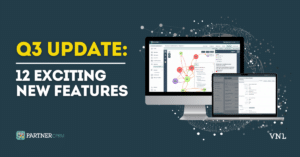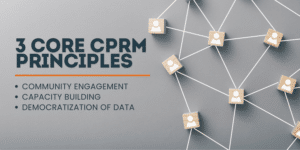5 Tips on Network Management from our Data Science Team

Network managment can be an imperfect science: Unlike typical hierarchical organizations, a network is horizontal, with few formal mechanisms for accountability through control. Network leaders have to rely on more abstract ideas like trust and mission alignment to keep their partners accountable, engaged, and committed to the network over the long term.
Luckily, we have a team of in-house network science savants, our Data Science team. We sat down with members of the team to get some clarity on best practices in regards to network management. Read on for 5 tips on network management from the experts!
1. Work collaboratively with network partners to identify a network strategy.

“Use VNL’s Network Strategy Worksheet to help you get started. Think through what your “ideal” network would look like – who would be a member, which characteristics they would have, how and why they would partner with one another, and what the goals of the network would be. Once you can clearly articulate how your “ideal” network would be described, then you can assess how far you are from that ideal, and develop a strategy to bridge that gap.”
2. Don’t overwhelm network partners with excessive invitations and requests.

“It’s important to give every partner a role that they understand, and only invite them or request something from them when it fits their role directly. Let partners know that while there is always an open invitation to attend meetings, you will only request it specifically when their role is needed. Avoiding sending excessive outreach helps limit burnout and increases network engagement in the long run.”
3. Think carefully About who is at the table, And who may be missing.

“Different types of network members bring different types of value to a network. It’s important to include key stakeholders and community voices engaged in and affected by the goals and work of the network. It’s also often important to ensure that you have participants with financial and regulatory influence, participants who can actually devote time to network efforts, participants with valuable connections to other community networks, and participants who possess critical resources that the network needs.”
4. However, more is not necessarily better when it comes to network members.

“Don’t feel like you need to include everyone! The more individuals, organizational representatives, and community stakeholders invited to participate in the network, the greater the likelihood that existing members will feel obligated to create partnerships with them – and maintaining too many partnerships can become draining.”
5. Regularly seek out feedback on network goals and progress from participants.

“Seeking out feedback from participants on their goals and progress can be performed through a simple and quick Google Form survey, or a more comprehensive effort through tools such as VNL’s PARTNER CPRM platform, and/or measures such as those compiled through the Aligning Systems for Health TEAM toolkit.”
PARTNER CPRM: Powerful & Adaptable.
As networks grow and change, it is natural for seemingly “unprecedented” events to occur. However, is important to remember that many network management events have been experienced successfully navigated before, especially by members of our Data Science team. The Team has assisted countless organizations of all sizes with their networks. Using these 5 tips and checking out our Network Leadership Resources page are great places to start learning more about network management.
Our Data Science team exclusively uses Visible Network Labs’ PARTNER CPRM platform to track, organize, and analyze organizational networks. PARTNER CPRM is the most comprehensive and complete way to track your network of partners and demonstrate your collective impact. Learn more about PARTNER CPRM, and schedule a demo here.
About the Author: Will Jacobson
Will is the Marketing Intern at VNL, and he joined the company in October 2021. Originally from New York City, Will loves Colorado and all the outdoor life it has to offer. He is also a pretty big foodie! Will assists in content creation, marketing, and communications for VNL. He is finishing up his degree in marketing from the University of Colorado Denver.




